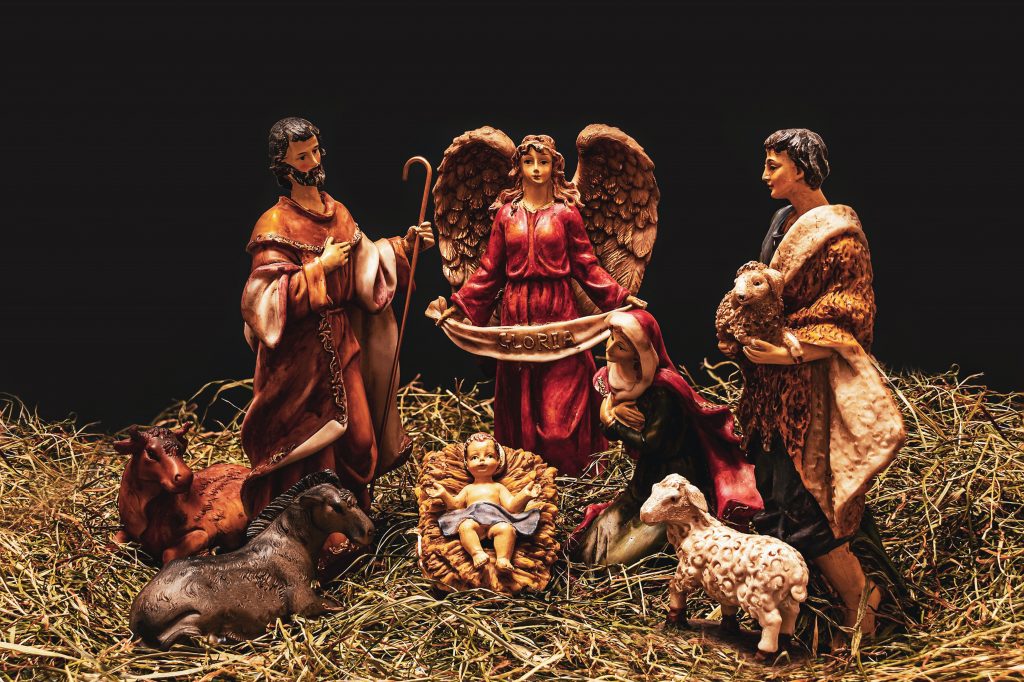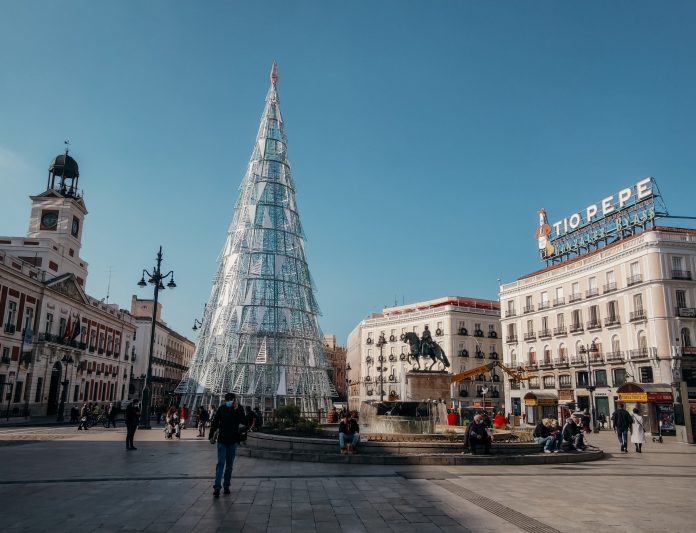Christmas is one of the most beautiful seasons. The streets are decorated with lights and full of people rushing to buy presents for their loved ones, families come together for nice meals and the world seems a better place to be.
It might seem like everyone celebrates Christmas in the same way but, although the spirit and the foundation are the same for everyone, Spanish Christmases are different from English ones.
Our Christmas spirit starts to appear with the Christmas basket. That moment of happiness when your employer gives you a good leg of ham, other iberian meats, almonds, chocolates and nougat. But, there are a lot of other traditions that make Spanish Christmas unique, fun, and tasty.
Putting up Christmas decorations
Even though not everyone is Christian or Catholic in Spain, it is tradition to put a nativity scene up during Christmas time. The appropriate time to put up Christmas decorations is on 8 December, as it’s a long weekend in Spain. These nativity scenes are usually made of painted clay and they range enormously in size and scale. The basic figures are baby Jesus, Virgin Mary, Joseph, the mule and the ox. From there, you can add as many pieces as you want, such as shepherds, sheep, farm animals or the three wise men. In Cataluña, for example, it’s very traditional to add the caganer ( a shepherd pooping)!

Christmas Eve and Christmas Day
It is difficult to choose which is the more important for Spanish people, Christmas Eve or Christmas Day. Nochebuena ( Christmas Eve) is the first big Christmas celebration. Families have big dinners that last for hours and, although every family is different and there isn’t a traditional dish, this meal usually involves some type of seafood like prawns, crawfish or clams, jamón and a big piece of meat.
Christmas Day starts with the obvious: opening presents. In Spain, up until a few years ago, Santa Claus wasn’t very common. Most families wouldn’t even have gifts on the 25 December but, with the growing influence of Anglo Saxon countries, younger generations are getting more and more used to the man in red. Most TV shows and Christmas films involve Santa Claus and none of them involve the three wise men, which is Spain’s tradition.
Los Reyes Magos (the three wise men) are biblical characters. According to the Bible, Melchior, Caspar and Balthazar followed a star from the east that led them to baby Jesus. Once they arrived in Belén (Bethlehem) they brought gifts to the newborn: gold, frankincense and myrrh. Now, according to Spanish tradition, they bring presents to children on 6 January.
New Year’s Eve and the twelve grapes
31 December is one of the biggest days. You dress up in your favourite sparkly outfit and have a nice dinner with your family. But, the fun starts when it gets to midnight. It is tradition to eat twelve grapes with the last twelve chimes of Madrid’s clock before starting the new year. Each grape represents a month from the new year and if you eat it on time it means you’ll have good luck.
This tradition has very strange origins. It appeared in the nineteenth century as a form of protest. The high bourgeoisie used to celebrate New Year with private parties where they served champagne and grapes, while other street festivities were banned. The lower class decided to gather in Plaza del Sol in Madrid to listen to the clock chimes (something that was still permitted) and, as a form of protest and social mockery, they decided to eat grapes.
Nowadays, after the family gathering, you go out with your friends. When you go back home in the early morning, you finish the celebrations in the best way possible; with chocolate and churros (fried dough).
In many countries, after the New Year celebrations, Christmas is over, but not in Spain. We still have two more dates to celebrate: the fifth and the sixth of January; probably everyone’s favourite couple of days.
The night of the 5 January is a very special night in most towns and cities. There’s what we call cabalgata de los reyes magos (the King’s parade). Lots of people participate, dancers, pages and huge floats that throw candies and sweets to the watching children.
Roscón’s days
During this time you can taste the best Spanish delicacy, Roscón de Reyes. Even though you could eat it all Christmas, traditionally it’s something you’ll eat in early January and you’ll only find it in stores until the 6th. It’s so good that you can have it for breakfast, a snack or even as dessert after your meal.
The Roscón is an oval-shaped cake that resembles a huge doughnut but doesn’t taste like it. On the top of it has candied fruit (that nobody actually eats!), sugar and sometimes almonds. The best part of it is the fact that it can be filled. Traditionally there were two options: an empty roscón or filled with whipped cream, but now you can find a lot of flavours like chocolate, vanilla or even exotic fruits like papaya or maracuya (passion fruit).
Inside the dough there are tiny gifts, usually figures made of clay, and they appear as you cut the cake. But, there’s one hidden surprise that you don’t want to have, and that’s the haba (bean). If you get it, then it is your turn to buy the next roscón. The tradition is to eat the roscón with a mug of hot chocolate.
We close our Christmas festivities with presents on the 6 January. That’s the day the Three wise men arrive and it’s our big present day. Gifts are wrapped in beautiful paper and placed under the Christmas tree. It’s a day to stay at home so the little ones can enjoy their new toys and play with them.
Feliz Navidad y un Feliz Año Nuevo
Words by Marta Cerdá Martínez
